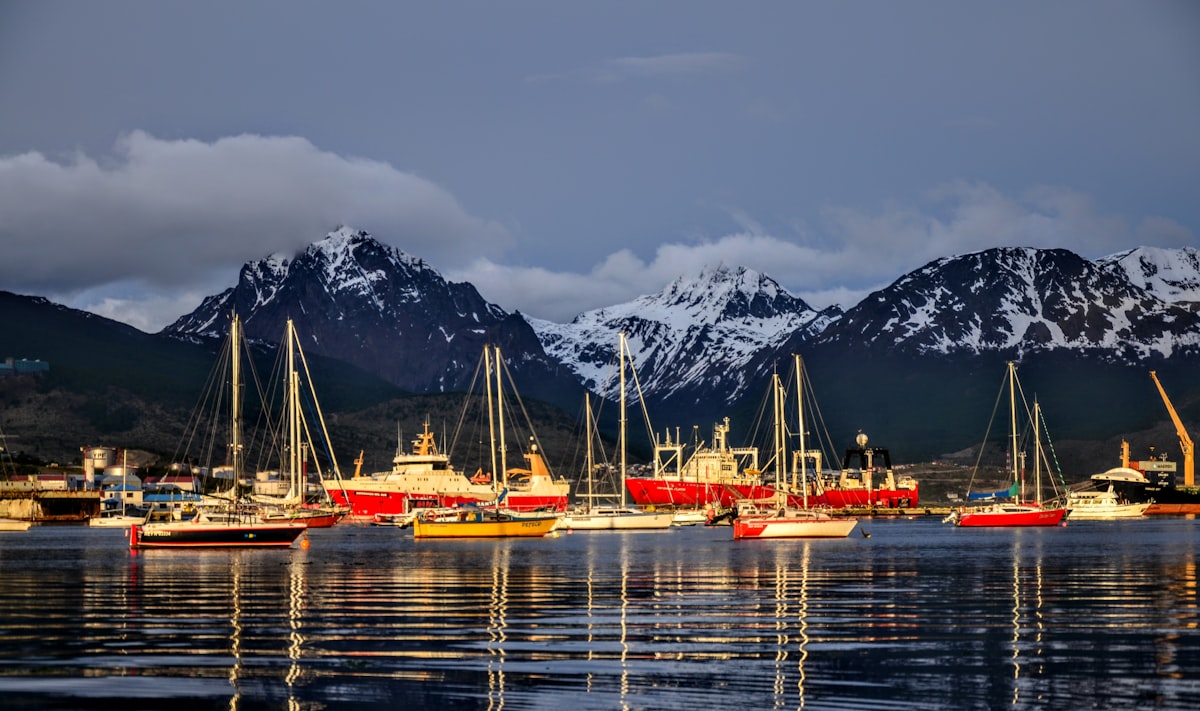Do you want to go fishing for spider crabs at the end of the world?
Near Ushuaia, a community of a hundred inhabitants makes artisanal fishing a philosophy of life and invites tourists to get to know and taste spectacular seafood.

Near Ushuaia, a community of a hundred inhabitants makes artisanal fishing a philosophy of life and invites tourists to get to know and taste spectacular seafood. Puerto Almanza is the last town in South America. Unique and authentic fishing village, all the neighbors are dedicated to throwing the nets to the sea, attending the tourists, and hiding in their geography a postcard of surprising colors with a gastronomic treasure: the spider crab.
Located 75 kilometers from Ushuaia, Puerto Almanza usually opens at least six restaurants during the day. It is a lonely and beautiful town. Beyond, there is only cold and the imminence of the Antarctic world. The sound of the seagulls and the small waves breaking on the coast is the music of the place, which is interrupted by the passage of a car. The cold is felt in the bones, the wind seems to cut everything that does not have a feather and the fishermen's houses seem to be the ideal refuge.
Almanza is caressed by the saltwater of the Beagle Channel and dotted with boats of various sizes. There, daily the fishermen throw themselves into the sea in semi-rigid boats and throw the baskets in search of the precious animal. In several places they put into practice a system that attracts all tourists: they take them to the coastal traps where the spider crabs await their destination. The trap is lifted, it is explained how it works and so the spider crab passes from the sea to the table. The fishing is done with a trap, some cones of metallic fabric that sink into the sea with a sebo (it can be red meat or fish in bad condition), the crab enters and cannot leave.
Then, Puerto Pirata, La Mesita de Lito or La Sirena & el Capitán are just some of the dining rooms that take part in the tourist corridor known as "la ruta de la centolla" (the spider crab route) and together with the restaurants in Ushuaia, they have been starring in this original and creative chapter of Argentine cuisine centered on the riches of the southern sea. Along 15 kilometers, from Almanza to Punta Paraná, you can also visit the greenhouses with fruit plantations such as strawberries, raspberries, and vegetables.
Exquisite and well-kept
Relative to the crab, the spider crab, when it reaches adulthood, at the age of seven, can weigh up to six kilos and is the vedette in the Beagle Channel. It is served whole, boiled, and marinated, but also in casseroles, soups, as a filling of the classic empanadas or ravioli. This lobster, not only is the attraction of the region but was also the cause of a strong dispute, of the many that the country had with Chile. In 1967, the Argentine schooner Cruz del Sur was fishing for crabs on Gable Island (within the Argentine territory) and a Chilean patrol boat, the "Fuentealba", ordered her to leave the place.
In the conflict over the Beagle Channel (it had a strong escalation in 1978), this island is the only one left for Argentina. Today it is inhabited by four prefects who stay there for 30 days. A few kilometers away you can see the Picton, Lennox, and Nueva islands, which are uninhabited and mined. Currently, on the channel, the traps are marked with colorful buoys. However, the resource is not overexploited. Fishing for spider crab in the Beagle Channel area began in 1930 and overfishing led to a temporary fishing ban in 1994.
To protect the spider crabs, a project was also promoted to breed spider crab larvae in the laboratory and reintroduce them to the channel to enhance the reproductive capacity of the declining species, which is produced only once a year, between November and December. Practically all of the crab caught in Puerto Almanza is consumed on the island of Tierra del Fuego. Occasionally they send a couple of kilos to other destinations. When there is an important event or a presidential summit, a little is sent and menus are made in Buenos Aires. But to eat spider crab you have to go to Ushuaia and to venture, you have to catch it with your hands.
Ushuaia, a city full of charms
Built almost entirely by inmates is surrounded by mountains Martial, Olivia, and Five Brothers. It is the capital of Tierra del Fuego and one of the most visited destinations in Argentina by foreign tourists who arrive attracted by the stunning landscape it forms, and by being the southernmost town on the planet. Although in summer more than half of the day has natural light, during the winter it barely reaches seven o'clock. This characteristic in no way represents an impediment to adventure and fun.
Useful facts: how to get there and what to do
To fly to Ushuaia from Neuquén, you have to make a stopover in Buenos Aires and it can take between 7 and 12 hours. From Buenos Aires, there are several daily flights, direct flights of three hours. In case of arriving by land, the main route is 3, by which you must cross the Strait of Magellan by ferry and transit through Chile. The city is exempt from value-added tax (VAT), you can access tax-free premises on San Martín Avenue.




